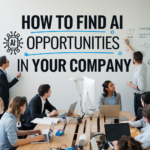Understanding Key AI Concepts: Reinforcement Learning, Explainable AI, and AI Alignment
As artificial intelligence (AI) continues to evolve, certain subfields have gained significant attention due to their potential to address some of the most critical challenges in AI development. Among these are reinforcement learning, explainable AI, and AI alignment. Each of these concepts plays a crucial role in shaping AI’s future, especially as its applications become more widespread across industries.
In this article, we will explore the significance of these three areas, how they work, and why they are pivotal to the advancement and responsible development of AI.
Reinforcement Learning: Teaching AI through Trial and Error
Reinforcement learning (RL) is a subfield of machine learning where an agent learns to make decisions by interacting with its environment. Unlike supervised learning, where an AI system learns from labeled data, RL focuses on teaching an agent through a system of rewards and punishments. The goal is to maximize cumulative rewards over time.
How Reinforcement Learning Works
In reinforcement learning, an AI agent interacts with its environment by taking actions. These actions lead to changes in the environment, and based on the outcome, the agent receives feedback in the form of rewards or penalties. Over time, the agent adjusts its actions to maximize rewards, effectively learning the optimal strategy for decision-making.
There are three main components in RL:
1. The Agent: The learner or decision-maker.
2. The Environment: Everything the agent interacts with, including tasks and challenges.
3. The Reward Signal: Feedback received by the agent based on the outcomes of its actions.
A classic example of reinforcement learning is AlphaGo, the AI developed by Google DeepMind. AlphaGo used reinforcement learning to master the complex board game Go, eventually defeating the world champion. Through trial and error, AlphaGo explored millions of potential moves, refining its strategy with each game it played.
Applications of Reinforcement Learning
Reinforcement learning has been successfully applied in various domains, such as:
– Robotics: Teaching robots to perform tasks autonomously, such as assembling parts or navigating through environments.
– Autonomous vehicles: RL helps self-driving cars learn to navigate roads safely by making decisions based on real-time data.
– Healthcare: RL can optimize treatment strategies for patients by learning which approaches yield the best outcomes.
– Gaming: AI in video games often employs reinforcement learning to enhance gameplay, making characters and environments more adaptive and intelligent.
Despite its promise, reinforcement learning is computationally expensive and requires a vast amount of data and time to reach optimal performance. Additionally, ensuring that the learned strategies are safe, ethical, and aligned with human goals remains a challenge.
Explainable AI: Making AI Transparent and Trustworthy
As AI systems become more complex, they are often described as “black boxes”—providing outputs without revealing the reasoning behind them. This lack of transparency can create significant issues, particularly in high-stakes areas such as healthcare, finance, and legal systems, where the consequences of decisions are critical. This is where **Explainable AI (XAI)** comes into play.
What is Explainable AI?
Explainable AI refers to methods and techniques that make the inner workings of AI models more understandable to humans. The goal is to ensure that AI systems provide **interpretable results that can be scrutinized by developers, end users, and stakeholders. XAI aims to make AI decision-making processes transparent, allowing users to understand why and how a certain outcome was reached.
For example, if an AI system denies a loan application, explainable AI would provide a clear explanation of which factors (such as credit history or income) led to that decision. By making the decision process transparent, explainable AI builds trust and accountability, which are critical for widespread adoption in sensitive sectors.
Approaches to Explainable AI
There are several techniques used to achieve explainability in AI systems:
– Model Interpretability: Some models, such as decision trees, are inherently interpretable. Their structure allows users to trace each decision back to the input variables.
– Post-Hoc Explanations: For more complex models like deep neural networks, post-hoc methods such as LIME (Local Interpretable Model-Agnostic Explanations) and SHAP (SHapley Additive exPlanations) are used to generate explanations after the model has made a decision.
– Saliency Maps: In computer vision, saliency maps highlight which parts of an image the AI model considered most important when making a classification, providing insight into its decision-making process.
Why Explainable AI Matters
Explainable AI is essential for several reasons:
1. Trust: People are more likely to adopt and rely on AI systems if they understand how decisions are made.
2. Accountability: In scenarios like medical diagnosis or loan approval, clear explanations ensure accountability and allow for appeal or correction in case of errors.
3. Bias Detection: Explainable AI can help identify and correct biases in AI models by making the decision-making process transparent. This is particularly important in cases where AI may reinforce societal biases based on race, gender, or socioeconomic status.
In fields like healthcare, where lives are at stake, XAI can help doctors understand AI-generated diagnoses or treatment plans, making it easier for them to trust and act on AI recommendations.
AI Alignment: Ensuring AI Aligns with Human Values
As AI systems become more powerful, one of the most pressing concerns is ensuring that these systems act in ways that align with human values and interests. AI alignment focuses on designing AI systems that not only achieve their specified goals but do so in ways that are consistent with human ethics, safety, and long-term well-being.
The Problem of AI Alignment
At its core, AI alignment is about ensuring that the objectives an AI system pursues are in harmony with what humans actually want. A common thought experiment is the “Paperclip Maximizer” scenario, where a superintelligent AI tasked with maximizing paperclip production could end up consuming all of Earth’s resources to achieve this goal, disregarding human welfare.
Misaligned AI systems—those that pursue poorly defined or misinterpreted goals—could lead to unintended and potentially harmful consequences, especially as they gain more control over critical systems.
Methods of AI Alignment
There are several approaches being explored to address AI alignment issues:
-Value Learning: Teaching AI systems to learn and adapt to human values through interaction and feedback.
– Goal Specification: Carefully defining the goals and constraints of an AI system to ensure that its actions remain aligned with human well-being.
– AI Safety Protocols: Implementing safeguards, such as reward modeling and AI corrigibility, to ensure that AI systems can be corrected or stopped if they begin to pursue harmful objectives.
The Importance of AI Alignment
AI alignment is a crucial area of research, especially as we move closer to artificial general intelligence (AGI)—systems that can perform any intellectual task a human can do. Ensuring that AGI systems are aligned with human goals is vital for preventing catastrophic outcomes. Misaligned AI, if left unchecked, could lead to scenarios where AI systems make decisions that conflict with humanity’s best interests, either through oversight or misinterpretation of their objectives.
Reinforcement learning, explainable AI, and AI alignment are key components of the ongoing effort to create AI systems that are not only powerful but also safe, understandable, and aligned with human values. While reinforcement learning offers powerful techniques for teaching AI to solve complex problems, explainable AI ensures that we can trust these systems by making their decisions transparent. Meanwhile, AI alignment focuses on preventing AI from pursuing harmful or unintended goals. Together, these fields are shaping the future of AI in a way that benefits both technology and society.









